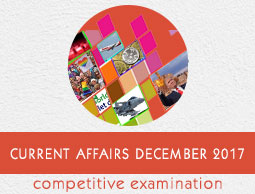
- Appointments
- Awards
- Books & Authors
- Committees
- Deaths
- Defence
- Economic
- Environment
- Finance
- Important Days
- International
- Miscellaneous
- National
- Persons in NEWS
- Places in NEWS
- Regional
- Reports
- Resignations & Retirements
- Science & Technology
- Sports
- December 2017 - Exams Resources
- Current Affairs - Quiz
- Current Affairs - Test
- Current Affairs - PDF
Current Affairs December 2017 - Technology
1 - Nasal foreign body removal device launched by government
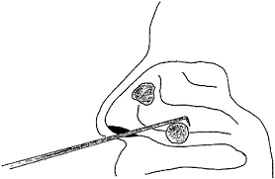
Bangalores start up InnAccel Technologies Private Limited has developed a nasal foreign body removal device. It is named as Noxeno, which was launched by Government. Noxeno permits doctors to quickly and safely remove objects inserted in nose that mostly children aged 2 to 10 years, put into their noses. It is first such creation by any fellow trained under Biodesign programme of Department of Biotechnology. Government launched Noxeno at a summit organised by Department of Biotechnology.
2 - NASA study unveiled existence of liquid water oceans on Pluto

In a new study of NASA, it has been unveiled that some icy worlds in our outer solar system, including Pluto, may harbour liquid water oceans beneath the surface. Heat generated by the gravitational pull of moons formed from massive collisions could extend the lifetimes of liquid water oceans beneath the surface of large icy worlds. The team is under process to develop and use even more accurate models to discover at what point a liquid water ocean forms; whether it forms almost immediately or if it requires a significant buildup of heat first.
3 - ISRO to launch 2nd Lunar mission Chandrayaan 2 by March 2018

Indian Space Research Organisation is planning to launch Chandrayaan-II by March 2018. The space agency's second indigenous mission to the earth's satellite will be equipped with upgraded domestic space technology. Chandrayaan-I had an impact probe, which crash landed on moon's surface, but Chandrayaan-II will have a controlled descent of a rover which will perform in-situ lunar surface observations for 14 Earth days and the data will be relayed back for further analysis.
4 - NASA's SuperTIGER Balloon Flies Again to Study Heavy Cosmic Particles
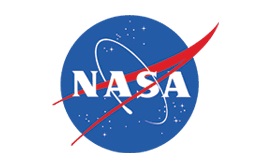
A science team in Antarctica is preparing to loft a balloon-borne instrument to collect information on cosmic rays, high-energy particles from beyond the solar system that enter Earth's atmosphere every moment of every day. The instrument, called the Super Trans-Iron Galactic Element Recorder (SuperTIGER), is designed to study rare heavy nuclei, which hold clues about where and how cosmic rays attain speeds up to nearly the speed of light. The launch is expected by Dec. 10, weather permitting.
5 - NASA finds another solar system with 8 planets
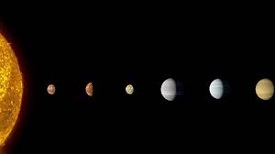
NASA with the help of its Kepler space telescope and artificial intelligence has discovered an eighth planet circling Kepler-90, a Sun-like star 2,545 light-years from Earth. The discovery marks the first solar system to tie with our solar system in the number of planets orbiting one star. The newly-discovered Kepler-90i a sizzling hot, rocky planet that orbits its star once every 14.4 days was found using machine learning from Google. Machine learning is an approach to artificial intelligence in which computers learn.
6 - India has deployed its own regional navigational system
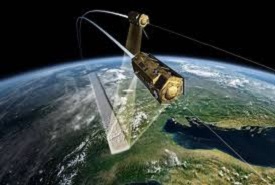
India has deployed its own regional navigational system, namely NavIC comprising of a constellation of seven navigational satellites and associated ground segment for providing position, navigation and timing services to Indian region. The IRNSS (NavIC) enables providing position, navigation and timing information that could be utilised for a large range of civil and strategic applications and services. The satellite is planned for launch during first quarter of 2018.
7 - ISRO is planning to launch the first solar mission, Aditya-L1
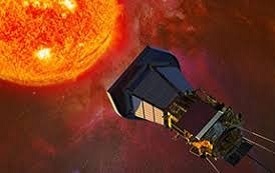
The Indian Space Research Organisation (ISRO) is planning to launch the first solar mission, Aditya-L1. Aditya-L1 is a fully indigenous effort with the participation of national institutions. Indian Institute of Astrophysics (IIA), Bengaluru is the lead institute for the development of Visible Emission Line Coronagraph (VELC). Aditya-L1 mission is aimed at studying the Sun from an orbit around the Sun-Earth Lagrangian point 1 (L1) which is about 1.5 million kilometers from the Earth.
8 - Yaogan Weixing remote sensing satellite launched by China
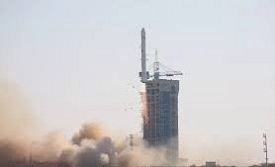
Yaogan Weixing remote sensing satellite, the Land Surveying Satellite -2 (LKW-2) was launched by Chinese scientists. It was launched into a pre-set orbit from Jiuquan Satellite Launch Center in the Gobi Desert of northwest China's Gansu Province. The satellite will help in scientific experiments, land survey, crop yield assessment, military purpose and disaster monitoring. LKW-2 is an electro-optical observer land-surveying satellite, used for remote sensing exploration of land resources. The LKW-1 satellite was launched in 2006.